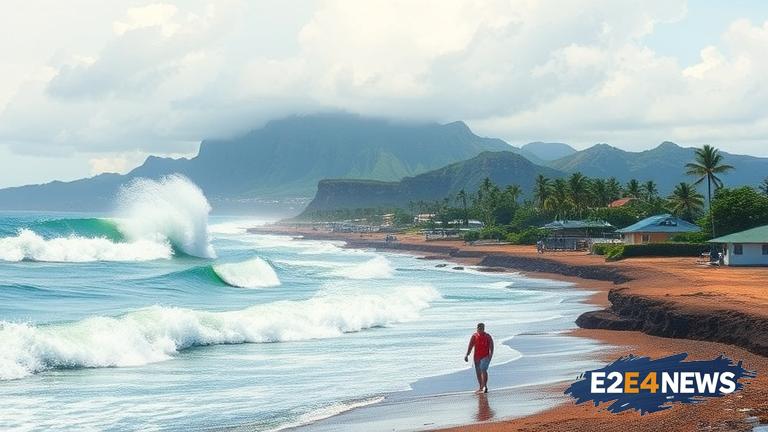On July 30, 2025, a tsunami warning was issued for the state of Hawaii, prompting a swift and coordinated response from residents, emergency responders, and government officials. The warning was triggered by a powerful earthquake that struck in the Pacific Ocean, sending shockwaves and tsunami waves towards the Hawaiian Islands. As the warning was issued, residents were advised to immediately evacuate coastal areas and move to higher ground. Many people quickly gathered their belongings and headed to safety, while others helped to evacuate those in need. The Hawaii Emergency Management Agency (HI-EMA) played a crucial role in coordinating the response efforts, working closely with local authorities and emergency responders. The agency issued regular updates and alerts, providing critical information to the public through social media, text messages, and traditional media outlets. Meanwhile, the National Weather Service (NWS) provided timely and accurate forecasts, helping to inform the public about the tsunami’s expected impact. As the tsunami waves approached, residents were advised to stay away from the coast and to avoid traveling unless absolutely necessary. The Hawaii Department of Transportation (HDOT) worked to ensure that roads and highways were clear, while the Hawaii Department of Education (HIDOE) cancelled classes and activities as a precautionary measure. The American Red Cross and other volunteer organizations were on hand to provide support and assistance to those in need. Despite the urgency of the situation, many residents reported feeling calm and prepared, thanks in part to regular tsunami drills and education campaigns. The state’s tsunami warning system, which includes a network of sirens, alerts, and emergency broadcasts, was credited with helping to save lives. As the tsunami waves made landfall, they caused significant damage and disruption, particularly in coastal areas. However, thanks to the swift and coordinated response, there were no reported fatalities or major injuries. In the aftermath of the event, officials praised the public for their calm and responsible behavior, and emphasized the importance of continued preparedness and vigilance. The incident served as a reminder of the importance of disaster preparedness and the need for ongoing education and awareness campaigns. As the state begins to recover and rebuild, residents are being encouraged to remain vigilant and to take steps to prepare for future disasters. The Hawaii tourism industry, which is a major driver of the state’s economy, is also expected to be impacted, with many visitors and tourists affected by the tsunami warning. However, officials are working to minimize the disruption and to ensure that the state’s tourism industry can recover quickly. In the coming days and weeks, the state will conduct a thorough review of its response efforts, with the goal of identifying areas for improvement and implementing changes to enhance its disaster preparedness and response capabilities. The incident has also highlighted the importance of international cooperation and collaboration, with officials from neighboring countries and territories offering support and assistance to Hawaii. As the state looks to the future, it is clear that the tsunami warning and response efforts have brought the community together, and have underscored the importance of preparedness, resilience, and cooperation in the face of disaster.
